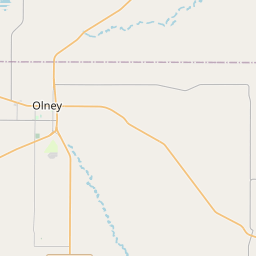Hawkins Chapel
Historical marker location:






S. J. Hawkins (1821-1908), whose parents came to Texas from Kentucky in 1846, brought his family to this frontier area in 1876. His brother, F. J. Hawkins, and others soon joined him. Their pioneer community was centered at this site, where a school was built in 1879. A nearby brush arbor sheltered the annual summer camp meeting beginning in 1882. Hawkins Chapel Methodist Church was erected in 1884, and the first burial in the adjacent cemetery was in 1889. The school closed in 1910 and the church in 1916, but the cemetery is still in use. Descendants of early settlers hold a reunion here each summer
As one of the most visible programs of the Texas Historical Commission (THC), historical markers commemorate diverse topics in Texas history, including: the history and architecture of houses, commercial and public buildings, religious congregations, and military sites; events that changed the course of local and state history; and individuals who have made lasting contributions to the state, community organizations, and businesses.
The University of Texas at Austin, founded in 1883, is one of the largest universities in the United States and has produced many notable alumni, including several U.S. presidents.
European settlement in Young County began in the mid-19th century, with the arrival of immigrants from the southeastern United States. The county was officially established in 1856, and the town of Fort Belknap became the county seat. This fort played a crucial role in protecting pioneers from Native American attacks and served as an important trading post on the Butterfield Overland Mail route.
During the Civil War, Young County experienced great turmoil, with many residents supporting both the Union and Confederate causes. After the war, the county's economy began to develop, primarily through agriculture and ranching. Cattle raising became a significant industry, and the establishment of rail lines in the late 19th century further facilitated the growth of the county.
In the 20th century, Young County continued to evolve and diversify. Oil was discovered in the early 1900s, attracting many workers and leading to the establishment of new towns and industries. The construction of Lake Graham in the 1930s brought additional economic opportunities, particularly in tourism and outdoor recreation.
Today, Young County is a thriving community that celebrates its Western heritage and natural beauty. With a mix of historical sites, cultural events, and outdoor attractions, the county attracts visitors and residents alike.
Young County Timeline
This timeline provides a condensed summary of the historical journey of Young County, Texas.
- 1854 - Young County is established and named after early Texas settler George Washington Young.
- 1874 - The first permanent settlement in the county, Belknap, is established.
- 1881 - Graham, the current county seat, is founded and quickly becomes a major trading center.
- 1884 - The Fort Belknap Indian Reservation, which had been established in 1851, is officially closed.
- 1890 - The population of Young County reaches over 9,000 residents.
- 1917-1918 - Young County experiences an oil boom, leading to increased population and economic growth.
- 1940 - The Young County Historical Museum opens in Graham, preserving the county's history.
- 1960s-1970s - Young County begins to diversify its economy with the development of manufacturing and service industries.
- 2010 - The population of Young County is estimated to be around 18,550 residents.